
Hi Everybody!!
My northern birds left 3 nights ago heading home. What makes them return to the northern breeding grounds? It is time to nest, lay and hatch eggs, then teach the babies to fly. Exactly what is a breeding ground? The birds return to the same location year after year to mate and raise young. They wait until most of winter is over and their frozen homeland begins to thaw. Only in the spring do the insects and grasses populate the north again, which is food source for the birds. Does anybody protect the breeding grounds? Yes, the birds have some friends in high places! In North America some birds and some breeding grounds are protected by: The Bureau of Land Management. Below, I have shared the Wikipedia Info on the BLM. You might want to check out the website to see more about how they help the birds. Also shared, excerpts from the 'Bird' page on the breeding grounds and nesting. You are beginning to see how easy it is to learn something new everyday! Your photostudy is of the Golden Hummingbird who did not leave with the other birds. He is still here and I have no idea what his plans are for the future! Enjoy!



https://en.wikipedia.org/wiki/Bird
Bird
From Wikipedia, the free encyclopedia
Modern birds are characterised by feathers, a beak with no teeth, the laying of hard-shelled eggs, a high metabolic rate, a four-chambered heart, and a lightweight but strongskeleton. Extant birds have wings; the most recent species without wings was the moa, which is generally considered to have become extinct in the 16th century. Wings are evolved forelimbs, and most bird species can fly. Flightless birds include ratites, penguins, and diverse endemic island species. Some species of birds, particularly penguins and members of the Anatidae family, are adapted to swim. Birds also have digestive andrespiratory systems that are uniquely adapted for flight. Some birds, especially corvids andparrots, are among the most intelligent animal species; several bird species make and use tools, and many social species culturally transmit knowledge across generations.
Many species annually migrate great distances, and many more perform shorter irregular movements. Birds are social, communicating with visual signals, calls, and songs, and participating in such social behaviours as cooperative breeding and hunting, flocking, andmobbing of predators. The vast majority of bird species are socially monogamous, usually for one breeding season at a time, sometimes for years, but rarely for life. Other species have polygynous ("many females") or, rarely, polyandrous ("many males") breeding systems. Eggs are usually laid in a nest and incubated by the parents. Most birds have an extended period of parental care after hatching.
Many species are economically important, mostly as game or poultry. Some species, particularly songbirds and parrots, are popular as pets. Another use of birds is harvestingguano (droppings) for use as a fertiliser. Birds prominently figure throughout human culture. About 120–130 species have become extinct due to human activity since the 17th century, and hundreds more before then. Human acitivity threatens about 1,200 bird species with extinction, though efforts are underway to protect them.
Distribution
See also: Lists of birds by region and Lists of birds by population
Birds live and breed in most terrestrial habitats and on all seven continents, reaching their southern extreme in the Snow Petrel's breeding colonies up to 440 kilometres (270 mi) inland in Antarctica.[42] The highest bird diversity occurs in tropical regions. It was earlier thought that this high diversity was the result of higher speciation rates in the tropics, however recent studies found higher speciation rates in the high latitudes that were offset by greater extinction rates than in the tropics.[43] Several families of birds have adapted to life both on the world's oceans and in them, with some seabird species coming ashore only to breed[44] and some penguins have been recorded diving up to 300 metres (980 ft).[45]
Many bird species have established breeding populations in areas to which they have been introduced by humans. Some of these introductions have been deliberate; the Ring-necked Pheasant, for example, has been introduced around the world as a game bird.[46]Others have been accidental, such as the establishment of wild Monk Parakeets in several North American cities after their escape from captivity.[47] Some species, including Cattle Egret,[48] Yellow-headed Caracara[49] and Galah,[50] have spread naturally far beyond their original ranges as agricultural practices created suitable new habitat.
Migration
Main article: Bird migration
Many bird species migrate to take advantage of global differences of seasonal temperatures, therefore optimising availability of food sources and breeding habitat. These migrations vary among the different groups. Many landbirds, shorebirds, and waterbirdsundertake annual long distance migrations, usually triggered by the length of daylight as well as weather conditions. These birds are characterised by a breeding season spent in the temperate or polar regions and a non-breeding season in the tropical regions or opposite hemisphere. Before migration, birds substantially increase body fats and reserves and reduce the size of some of their organs.[67][120] Migration is highly demanding energetically, particularly as birds need to cross deserts and oceans without refuelling. Landbirds have a flight range of around 2,500 km (1,600 mi) and shorebirds can fly up to 4,000 km (2,500 mi),[121] although the Bar-tailed Godwit is capable of non-stop flights of up to 10,200 km (6,300 mi).[122] Seabirds also undertake long migrations, the longest annual migration being those of Sooty Shearwaters, which nest in New Zealand and Chile and spend the northern summer feeding in the North Pacific off Japan, Alaska and California, an annual round trip of 64,000 km (39,800 mi).[123] Other seabirds disperse after breeding, travelling widely but having no set migration route. Albatrosses nesting in the Southern Ocean often undertake circumpolar trips between breeding seasons.[124]
Some bird species undertake shorter migrations, travelling only as far as is required to avoid bad weather or obtain food. Irruptive species such as the boreal finches are one such group and can commonly be found at a location in one year and absent the next. This type of migration is normally associated with food availability.[125] Species may also travel shorter distances over part of their range, with individuals from higher latitudes travelling into the existing range of conspecifics; others undertake partial migrations, where only a fraction of the population, usually females and subdominant males, migrates.[126] Partial migration can form a large percentage of the migration behaviour of birds in some regions; in Australia, surveys found that 44% of non-passerine birds and 32% of passerines were partially migratory.[127] Altitudinal migration is a form of short distance migration in which birds spend the breeding season at higher altitudes elevations and move to lower ones during suboptimal conditions. It is most often triggered by temperature changes and usually occurs when the normal territories also become inhospitable due to lack of food.[128] Some species may also be nomadic, holding no fixed territory and moving according to weather and food availability. Parrots as a family are overwhelmingly neither migratory nor sedentary but considered to either be dispersive, irruptive, nomadic or undertake small and irregular migrations.[129]
The ability of birds to return to precise locations across vast distances has been known for some time; in an experiment conducted in the 1950s a Manx Shearwater released in Boston returned to its colony in Skomer,Wales, within 13 days, a distance of 5,150 km (3,200 mi).[130] Birds navigate during migration using a variety of methods. For diurnalmigrants, the sun is used to navigate by day, and a stellar compass is used at night. Birds that use the sun compensate for the changing position of the sun during the day by the use of an internal clock.[52] Orientation with the stellar compass depends on the position of the constellations surrounding Polaris.[131] These are backed up in some species by their ability to sense the Earth'sgeomagnetism through specialised photoreceptors.[132]
Flocking and other associations
While some birds are essentially territorial or live in small family groups, other birds may form large flocks. The principal benefits of flocking are safety in numbers and increased foraging efficiency.[52] Defence against predators is particularly important in closed habitats like forests, where ambush predation is common and multiple eyes can provide a valuable early warning system. This has led to the development of many mixed-species feeding flocks, which are usually composed of small numbers of many species; these flocks provide safety in numbers but increase potential competition for resources.[143]Costs of flocking include bullying of socially subordinate birds by more dominant birds and the reduction of feeding efficiency in certain cases.[144]
Birds sometimes also form associations with non-avian species. Plunge-diving seabirdsassociate with dolphins and tuna, which push shoaling fish towards the surface.[145]Hornbills have a mutualistic relationship with Dwarf Mongooses, in which they forage together and warn each other of nearby birds of prey and other predators.[146]
File:Red-billed quelea flocking at waterhole.jpg
From Wikipedia, the free encyclopedia
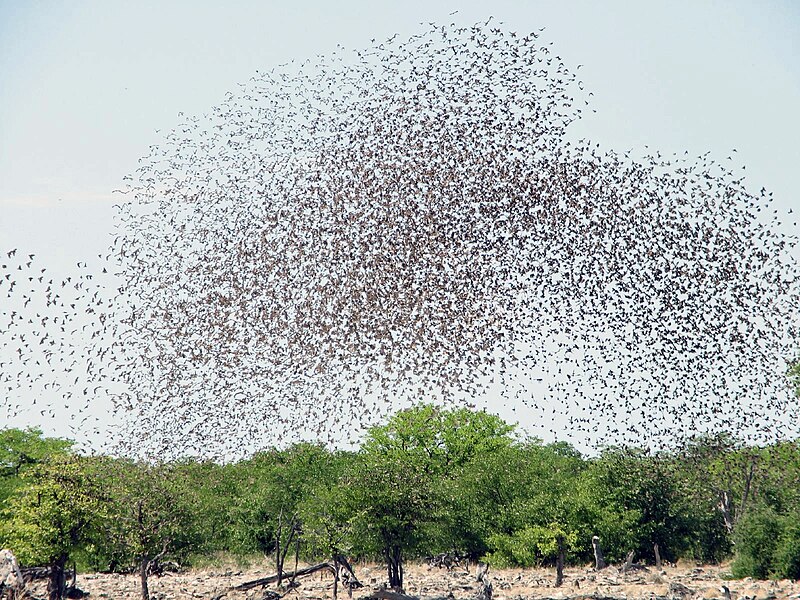
Size of this preview: 800 × 600 pixels. Other resolutions: 320 × 240 pixels | 640 × 480 pixels | 1,024 × 768 pixels | 1,280 × 960 pixels | 1,600 × 1,200 pixels.
Original file (1,600 × 1,200 pixels, file size: 519 KB, MIME type: image/jpeg)
Breeding
Main category: Avian sexuality
Social systems
Ninety-five percent of bird species are socially monogamous. These species pair for at least the length of the breeding season or—in some cases—for several years or until the death of one mate.[157] Monogamy allows for both paternal care and biparental care, which is especially important for species in which females require males' assistance for successful brood-rearing.[158] Among many socially monogamous species, extra-pair copulation (infidelity) is common.[159] Such behaviour typically occurs between dominant males and females paired with subordinate males, but may also be the result of forced copulation in ducks and other anatids.[160] For females, possible benefits of extra-pair copulation include getting better genes for her offspring and insuring against the possibility of infertility in her mate.[161] Males of species that engage in extra-pair copulations will closely guard their mates to ensure the parentage of the offspring that they raise.[162]
Other mating systems, including polygyny, polyandry, polygamy, polygynandry, andpromiscuity, also occur.[52] Polygamous breeding systems arise when females are able to raise broods without the help of males.[52] Some species may use more than one system depending on the circumstances.
Breeding usually involves some form of courtship display, typically performed by the male.[163] Most displays are rather simple and involve some type of song. Some displays, however, are quite elaborate. Depending on the species, these may include wing or tail drumming, dancing, aerial flights, or communal lekking. Females are generally the ones that drive partner selection,[164] although in the polyandrous phalaropes, this is reversed: plainer males choose brightly coloured females.[165] Courtship feeding, billing and allopreening are commonly performed between partners, generally after the birds have paired and mated.[66]
Homosexual behaviour has been observed in males or females in numerous species of birds, including copulation, pair-bonding, and joint parenting of chicks.[166]
Territories, nesting and incubation
See also: Bird nest
Many birds actively defend a territory from others of the same species during the breeding season; maintenance of territories protects the food source for their chicks. Species that are unable to defend feeding territories, such as seabirds and swifts, often breed incolonies instead; this is thought to offer protection from predators. Colonial breeders defend small nesting sites, and competition between and within species for nesting sites can be intense.[167]
All birds lay amniotic eggs with hard shells made mostly of calcium carbonate.[52] Hole and burrow nesting species tend to lay white or pale eggs, while open nesters lay camouflaged eggs. There are many exceptions to this pattern, however; the ground-nestingnightjars have pale eggs, and camouflage is instead provided by their plumage. Species that are victims of brood parasites have varying egg colours to improve the chances of spotting a parasite's egg, which forces female parasites to match their eggs to those of their hosts.[168]
Bird eggs are usually laid in a nest. Most species create somewhat elaborate nests, which can be cups, domes, plates, beds scrapes, mounds, or burrows.[169] Some bird nests, however, are extremely primitive; albatross nests are no more than a scrape on the ground. Most birds build nests in sheltered, hidden areas to avoid predation, but large or colonial birds—which are more capable of defence—may build more open nests. During nest construction, some species seek out plant matter from plants with parasite-reducing toxins to improve chick survival,[170] and feathers are often used for nest insulation.[169]Some bird species have no nests; the cliff-nesting Common Guillemot lays its eggs on bare rock, and male Emperor Penguins keep eggs between their body and feet. The absence of nests is especially prevalent in ground-nesting species where the newly hatched young are precocial.
Incubation, which optimises temperature for chick development, usually begins after the last egg has been laid.[52] In monogamous species incubation duties are often shared, whereas in polygamous species one parent is wholly responsible for incubation. Warmth from parents passes to the eggs through brood patches, areas of bare skin on the abdomen or breast of the incubating birds. Incubation can be an energetically demanding process; adult albatrosses, for instance, lose as much as 83 grams (2.9 oz) of body weight per day of incubation.[171] The warmth for the incubation of the eggs of megapodescomes from the sun, decaying vegetation or volcanic sources.[172] Incubation periods range from 10 days (in woodpeckers, cuckoos and passerine birds) to over 80 days (in albatrosses and kiwis).[52]
Parental care and fledging
At the time of their hatching, chicks range in development from helpless to independent, depending on their species. Helpless chicks are termed altricial, and tend to be born small, blind, immobile and naked; chicks that are mobile and feathered upon hatching are termed precocial. Altricial chicks need help thermoregulating and must be brooded for longer than precocial chicks. Chicks at neither of these extremes can be semi-precocial or semi-altricial.
The length and nature of parental care varies widely amongst different orders and species. At one extreme, parental care in megapodesends at hatching; the newly hatched chick digs itself out of the nest mound without parental assistance and can fend for itself immediately.[173] At the other extreme, many seabirds have extended periods of parental care, the longest being that of the Great Frigatebird, whose chicks take up to six months to fledge and are fed by the parents for up to an additional 14 months.[174] The chick guard stage describes the period of breeding during which one of the adult birds is permanently present at the nest after chicks have hatched. The main purpose of the guard stage is to aid offspring to thermoregulate and protect them from predation.[175]
In some species, both parents care for nestlings and fledglings; in others, such care is the responsibility of only one sex. In some species, other members of the same species—usually close relatives of the breeding pair, such as offspring from previous broods—will help with the raising of the young.[176] Such alloparenting is particularly common among the Corvida, which includes such birds as the true crows, Australian Magpie and Fairy-wrens,[177] but has been observed in species as different as the Rifleman and Red Kite. Among most groups of animals, male parental care is rare. In birds, however, it is quite common—more so than in any other vertebrate class.[52] Though territory and nest site defence, incubation, and chick feeding are often shared tasks, there is sometimes a division of labour in which one mate undertakes all or most of a particular duty.[178]
The point at which chicks fledge varies dramatically. The chicks of the Synthliboramphus murrelets, like the Ancient Murrelet, leave the nest the night after they hatch, following their parents out to sea, where they are raised away from terrestrial predators.[179] Some other species, such as ducks, move their chicks away from the nest at an early age. In most species, chicks leave the nest just before, or soon after, they are able to fly. The amount of parental care after fledging varies; albatross chicks leave the nest on their own and receive no further help, while other species continue some supplementary feeding after fledging.[180] Chicks may also follow their parents during their first migration.[181]

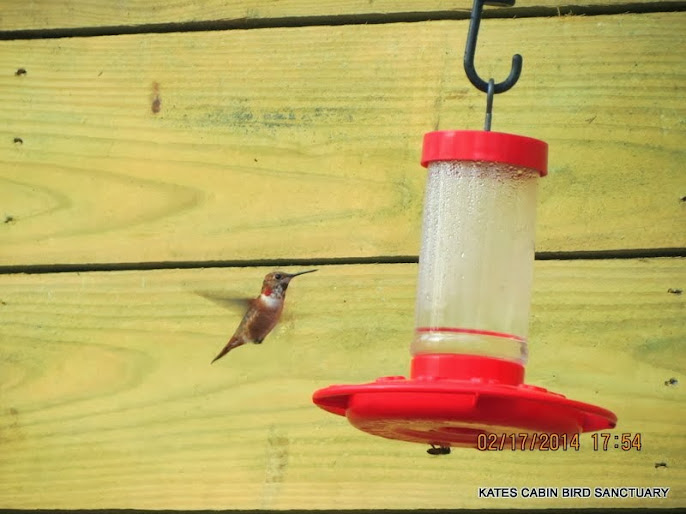
https://plus.google.com/u/0/photos/117645114459863049265/albums/5981781171249508113

https://en.wikipedia.org/wiki/Bureau_of_Land_Management
Bureau of Land Management
From Wikipedia, the free encyclopedia
The Bureau of Land Management (BLM) is an agency within the United States Department of the Interior that administers America's public lands, totaling approximately 247.3 million acres, or one-eighth of the landmass of the country.[1]The BLM also manages 700 million acres (2,800,000 km2) of subsurface mineral estate underlying federal, state, and private lands. Most public lands are located in western states, especially Alaska. With approximately 10,000 permanent employees and close to 2,000 seasonal employees, this works out to over 21,000 acres (85 km2) per employee. the agency's budget was US$960,000,000 for 2010 ($3.79 per surface acre, $9.38 per hectare).[2]
The BLM's stated mission is to sustain the health, diversity and productivity of the public lands for the use and enjoyment of present and future generations.
Today[edit]
The BLM regulates activities in hunting, fishing, camping, hiking,boating, hang gliding, shooting, off-highway vehicle driving, mountain biking, birding, and visiting natural and cultural heritage sites. The BLM also regulates logging, mining, fracking and other activities.
The BLM administers 205,498 miles (330,717 km) of fishable streams, 2.2 million acres (8,900 km2) oflakes and reservoirs, 6,600 miles (10,600 km) of floatable rivers, over 500 boating access points, 69National Back Country Byways, and 300 Watchable Wildlife sites. The BLM also manages 4,500 miles (7,200 km) of National Scenic, Historic, and Recreational Trails, as well as thousands of miles of multiple use trails used by motorcyclists, hikers, equestrians, and mountain bikers.
Of the BLM’s 247.3 million acres, the Bureau manages 55 million acres (220,000 km2) offorests and woodlands, including 11 million acres (45,000 km2) of commercial forest and 44 million acres (180,000 km2) of woodlands within 11 western States and Alaska. 53 million acres (210,000 km2) are productive forests and woodlands on Public Domain lands and 2.4 million acres (9,700 km2) are on Oregon and California Grant lands in western Oregon. Additionally, as part of its trust responsibility, the BLM oversees minerals operations on 56 million acres (230,000 km2) of Indian lands. In addition, the BLM also has a National Wild Horse and Burro Program in which it manages animals on public rangelands. Even though the BLM manages one of the largest amount of public land in the United States, resource protection of BLM public lands is being done on an on-going reduced budget, with uniformed law enforcement rangers patrolling an average of 1.45 million acres (5,900 km2) per ranger.
The BLM is a significant revenue producer to the United States budget. In 2009, public lands were expected to generate an estimated $6.2 billion in revenues, mostly from energy development. Nearly 43.5 percent of these receipts are provided directly to states and counties to support roads, schools, and other community needs.[5]
Increasingly, the BLM has had to address the needs of a growing and changing West. Ten of the 12 western states with significant proportions of BLM-managed lands have among the fastest rates of population growth in the United States.
One of the BLM's goals is to recognize the demands of public land users while addressing the needs of traditional user groups and working within smaller budgets. Perhaps one of the Bureau's greatest challenges is to develop more effective land management practices, while becoming more efficient at the same time.
The BLM has a wide range of responsibilities, including collecting geographic information, maintaining records of land ownership and mineral rights, conserving wilderness areas while allocating other areas for grazing and agriculture, and protecting cultural heritage sites on public land. The BLM operates the National Landscape Conservation System, which protects some U.S. National Monuments, some National Wild and Scenic Rivers, and some designated wildernesses among other types of areas includingwilderness study areas.
The BLM is a major employer of wildland firefighters, range conservationists, foresters, botanists, land specialists, geologists, archaeologists, biologists, outdoor recreation planners, and surveyors.
Law enforcement and security[edit]
The BLM Office of Law Enforcement & Security, headquartered in Washington, D.C., is afederal law enforcement agency of the U.S. government. All Law Enforcement Rangers and Special Agents receive their training through Federal Law Enforcement Training Center (FLETC). Law Enforcement Rangers attend the Land Management Police Training (LMPT) academy at FLTEC, while BLM Special Agents attend the Criminal Investigator Training Program (CITP) at FLETC.
BLM Law Enforcement Rangers and Special Agents make up the law enforcement capability of the BLM. Rangers and Special Agents are located in each of the western states that have BLM lands. Law Enforcement Rangers make up the uniformed high visibility enforcement of laws. Special Agents investigate crimes against property, visitors and employees.
Uniformed Law Enforcement Rangers enforce Federal laws and regulations governing BLM lands and resources. Law Enforcement Rangers also enforce some or all state laws on BLM lands. As part of that mission Law Enforcement Rangers carry firearms, defensive equipment, make arrests, execute search warrants, complete reports and testify in court. They establish a regular and recurring presence on a vast amount of public lands, roads, and recreation sites. The primary focus of their jobs is the protection of natural resources, protection of BLM employees and the protection of visitors. They use K-9s, helicopters, snowmobiles, dirt bikes and boats to perform their duties.
Special Agents are criminal investigators who plan and conduct investigations concerning possible violations of criminal and administrative provisions of the BLM and other statutes under the United States Code. Special agents are normally plain clothes officers who carry concealed firearms, and other defensive equipment, make arrests, carry out complex criminal investigations, present cases for prosecution to U.S. Attorneys, and prepare investigative reports. Criminal investigators occasionally conduct internal and civil claim investigations.
Energy transport corridors[edit]
The BLM and the U.S. Forest Service issued Records of Decision in mid-January to amend 130 of their land use plans to support the designation of more than 6,000 miles (9,700 km) of energy transport corridors on federal lands in 11 Western States. The amendments were based on analyses presented in a Final Programmatic Environmental Impact Statement (PEIS) that was prepared by the BLM, DOE and the U.S. Departments of Agriculture and Defense as part of their work to implement the Energy Policy Act of 2005. The PEIS, released late last year, identifies energy corridors in the West for transmission and distribution lines that will help facilitate the development of renewable energy resources. The energy corridors could also carry pipelines for oil, natural gas, and hydrogen. Approximately 5,000 miles (8,000 km) of energy corridors are located on BLM-managed lands, while nearly 1,000 miles (1,600 km) of energy corridors are on U.S. Forest Service lands. Roughly 120 miles (190 km) of corridor segments are on lands managed by the Bureau of Reclamation, the National Park Service, and the Department of Defense.[9]
Website: http://www.blm.gov/wo/st/en.html


https://plus.google.com/u/0/photos/117645114459863049265/albums/5981779924885691553


...this is brendasue signing off from Rainbow Creek. See you next time! Look up for passing birds!


O+O

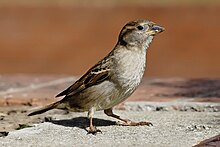

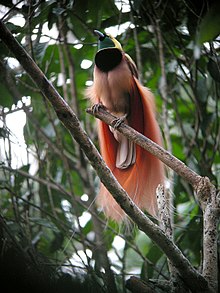
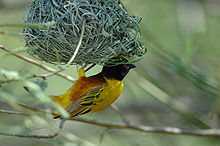
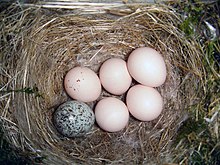
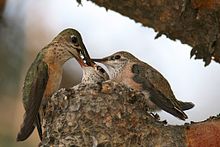





No comments:
Post a Comment
Hi Everybody! Please say hello and follow so I know you are here! Due to the inconsideration of people trying to put commercials on my blog comment area, I have restricted use of anonymous posts. Sorry that some hurt all.
My public email is katescabin@gmail.com No spammers or trolls